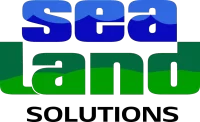Aquaculture Solutions
Sea Land Solutions offers specialised aquaculture solutions in Sydney and New South Wales. We leverage advanced geospatial mapping software to optimise productivity and environmental sustainability, ensuring that your aquaculture endeavours thrive.
Whether you require aquaculture facility design, lease clearing, or mooring system installation for floating aquaculture infrastructure, we have the expertise you need. Our team understands the intricacies of aquaculture and tailors solutions to your specific requirements.
Using cutting-edge technology, we ensure that your aquaculture operations are efficient, sustainable, and compliant with regulations. We take pride in helping you achieve your aquaculture goals while minimising environmental impact.
Choose Sea Land Solutions for comprehensive aquaculture solutions in Sydney and New South Wales. Contact us today to enhance your aquaculture endeavours and reap the benefits of our expertise.
We specialise in farm planning and mapping plus the design and installation of mooring systems for the use of the Flip Farm system. You can find out more information here FlipFarm.com.
Aquaculture design and infrastructure










What is Aquaculture?
At its core, aquaculture involves the controlled cultivation of aquatic organisms, including fish, shellfish, and aquatic plants, in various aquatic environments. These environments can range from freshwater ponds and tanks to coastal and offshore marine systems. Aquaculture encompasses a diverse range of species, each tailored to specific environmental conditions and production goals.
How Does Aquaculture Work?
Aquaculture practices vary widely based on the species being cultured and the chosen production system. However, the fundamental principles remain consistent across the board. Aquaculturists carefully manage the entire life cycle of the aquatic species they cultivate, from hatching or seeding to harvesting.
Key Components of Aquaculture:
Broodstock Management: Successful aquaculture begins with the selection and management of breeding stock. Healthy and genetically robust broodstock are essential for producing high-quality offspring.
Hatcheries and Nurseries: Aquaculture often begins in hatcheries, where eggs are fertilized and hatched under controlled conditions. Once hatched, the young aquatic organisms are transferred to nurseries for initial growth.
Grow-Out Facilities: Aquaculture systems for grow-out can vary widely. These facilities include ponds, raceways, cages, tanks, and even recirculating aquaculture systems (RAS), depending on the species and environmental requirements.
Water Quality Management: Monitoring and maintaining water quality is crucial in aquaculture. Factors such as temperature, dissolved oxygen, pH, and nutrient levels must be carefully regulated to ensure the health and growth of the cultured species.
Feeding and Nutrition: Providing the right diet is essential for the growth and health of aquatic organisms. Nutritionists formulate feeds tailored to the specific needs of each species, optimizing growth rates and minimizing waste.
Health Management: Disease prevention and control are paramount in aquaculture. Proactive health management strategies, including vaccination and quarantine, help ensure the well-being of the cultured organisms.
Harvesting and Processing: When the aquatic organisms reach maturity, they are harvested using methods that minimize stress and maintain product quality. Post-harvest processing includes cleaning, gutting, and packaging for distribution to markets.
Why Aquaculture Matters
Aquaculture has become a vital component of global food security, providing a consistent and sustainable source of seafood. Here are some compelling reasons why aquaculture matters:
Sustainability: Aquaculture allows for responsible and sustainable seafood production, reducing the pressure on overexploited wild fish populations.
Economic Growth: Aquaculture contributes significantly to the global economy, generating employment opportunities in rural and coastal communities.
Food Security: With the world’s population on the rise, aquaculture helps ensure a steady supply of protein-rich seafood to meet the growing demand for nutritious food.
Environmental Conservation: Well-managed aquaculture systems can have a lower environmental impact than some forms of wild fishing, reducing habitat destruction and bycatch.
Innovation: Aquaculture drives innovation in aquaculture technology, genetics, and sustainable practices, benefiting both the industry and the environment.
As the demand for seafood continues to rise, aquaculture will play an increasingly vital role in providing sustainable, high-quality seafood products. By understanding the principles and practices of aquaculture, we can contribute to a healthier planet and a more secure food future for all.
